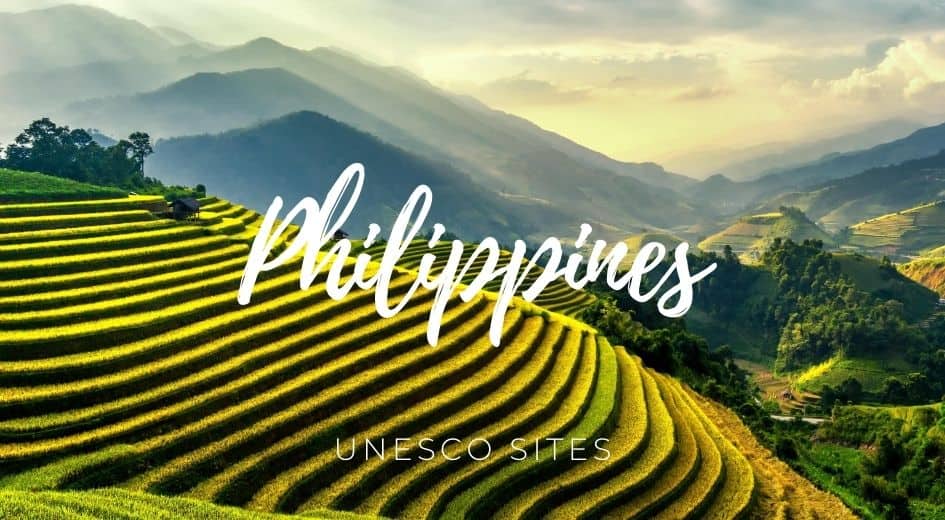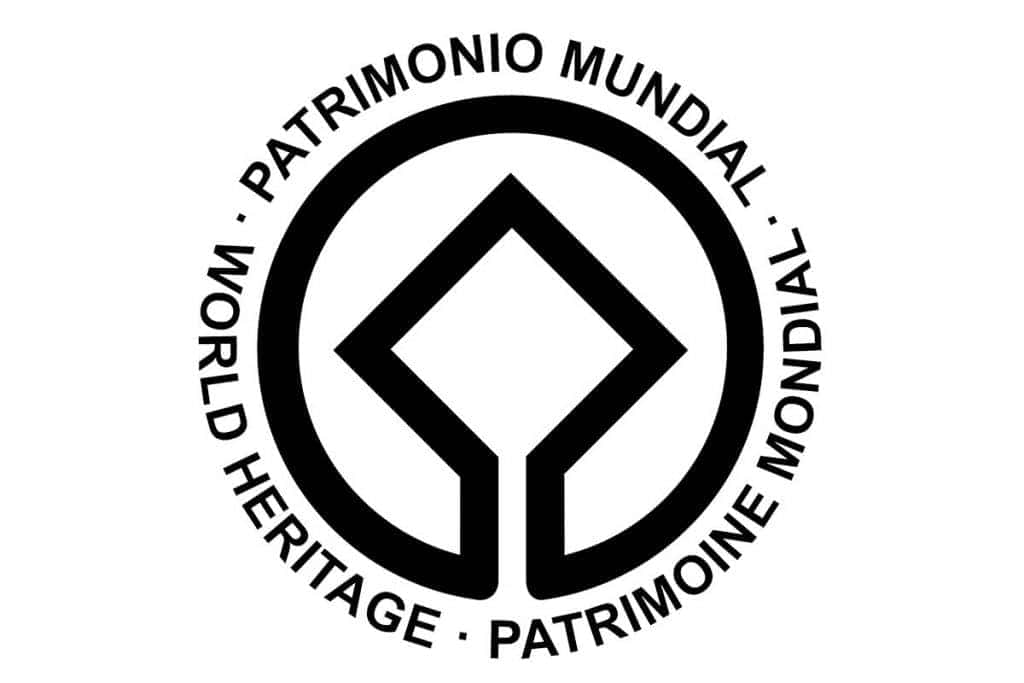Table of Contents


Philippines UNESCO has registered 6 sites on the World Heritage list and 19 on the tentative list.
Some places are so interesting that it’s relevant to keep them for future generations. This is why UNESCO has built a list of crucial classified properties in which superb places stand out for their aesthetic, natural, artistic, or cultural significance.
More than a thousand places are registered as Unesco’s World Heritage worldwide. Due to my interest in visiting World Heritage sites, I compiled the UNESCO list in the Philippines and the corresponding map.
Philippines UNESCO list
- Baroque Churches of the Philippines
- Historic City of Vigan
- Rice Terraces of the Philippine Cordilleras
- Mount Hamiguitan Range Wildlife Sanctuary
- Puerto-Princesa Subterranean River National Park
- Tubbataha Reefs Natural Park
Philippines UNESCO Map
Click on the blue pins to view more relevant information about each World Heritage site in the Philippines.
Description
- The Baroque Churches of the Philippines is a group of four churches in the Philippines built during the Spanish colonial period in the 16th to 18th centuries. They are known for their unique architectural style that blends European and local influences and is recognized as a UNESCO World Heritage Site.
- The Historic City of Vigan is a well-preserved Spanish colonial town in the northern Philippines. It was founded in the 16th century and is known for its Spanish-style architecture, cobblestone streets, and traditional houses. The city is recognized as a UNESCO World Heritage Site and provides a glimpse into the country’s colonial past.
- The Rice Terraces of the Philippine Cordilleras are a series of rice terraces located in the mountainous regions of the northern Philippines. They were built over 2,000 years ago by the Ifugao people and are known for their unique engineering and agricultural techniques. The rice terraces are recognized as a UNESCO World Heritage Site and provide a glimpse into the ancient cultural practices of the region.
- The Mount Hamiguitan Range Wildlife Sanctuary is a protected area in the southern Philippines. It is known for its diverse ecosystem, which includes over 1,300 plant species and several endangered animal species. The sanctuary is recognized as a UNESCO World Heritage Site and provides a glimpse into the rich biodiversity of the Philippines.
- The Puerto-Princesa Subterranean River National Park is a protected area in the western Philippines. It is known for its underground river, considered one of the longest navigable underground rivers in the world. The park is recognized as a UNESCO World Heritage Site and provides a glimpse into the unique geological formations of the region.
- The Tubbataha Reefs Natural Park is a protected area located in the Sulu Sea in the southwestern Philippines. It is known for its diverse marine life, which includes over 600 species of fish and 360 species of coral. The park is recognized as a UNESCO World Heritage Site and provides a glimpse into the rich marine biodiversity of the Philippines.
UNESCO World Heritage Sites in Philippines have protected places for their cultural and natural importance.
Sites on the Tentative List
- Batanes Protected landscapes and seascapes
- The Tabon Cave Complex and all of Lipuun
- Paleolithic Archaeological Sites in Cagayan Valley
- Kabayan Mummy Burial Caves
- Butuan Archeological Sites
- Baroque Churches of the Philippines (Extension)
- Petroglyphs and Petrographs of the Philippines
- Neolithic Shell Midden Sites in Lal-lo and Gattaran Municipalities
- Chocolate Hills Natural Monument
- Mt. Malindang Range Natural Park
- Mt. Pulag National Park
- Apo Reef Natural Park
- El Nido-Taytay Managed Resource Protected Area
- Coron Island Natural Biotic Area
- Mt. Iglit-Baco National Park
- Northern Sierra Madre Natural Park and outlying areas inclusive of the buffer zone
- Mt. Mantalingahan Protected Landscape
- Mayon Volcano Natural Park (MMVNP)
- Turtle Islands Wildlife Sanctuary


